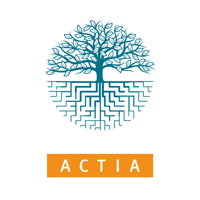The UMT ACTIA 17.09 "SafeMat: Safety of contact materials and packaging", inaugurated in January 2017, pools the experience of the two entities INRAE/AgroParisTech (UMR 782 SayFood - Ingénierie des Aliments et Bioproduits) and LNE around the issue of safety of contact materials and packaging. Products in contact are diverse and classified in four categories: i) foodstuffs; ii) cosmetics; iii) medicines and iv) biological liquids. The pooling of resources meets three needs: (i) to maintain a critical workforce and sufficient expertise; (ii) to take charge of ambitious research programs covering low-TRL R&D actions through to dissemination actions on a European scale; (iii) to develop an integrated engineering-type offering at the service of the industries concerned (agri-food, chemicals, materials) and authorities..
R&D priorities
The UMT ACTIA 17.09 SAFEMAT version 1 organizes and structures its R&D activities with a view to supporting French and European regulations, and supports through innovation and risk management the transition from a linear economy to a more circular economy, where materials are increasingly recycled, reused and reemployed. The engineering approach proposed as part of the UMT SafeMat obtains low TRL research and development (R&D) actions as well as high TRL transfers to industry, to meet the various challenges identified, along the following three lines of work:.
- AXE 1: acquisition and consolidation of knowledge relating to the physicochemical mechanisms controlling contamination;
- AXE 2: methodological developments in analytical chemistry and physical chemistry to validate and develop predictive approaches on real applications of progressive complexity;
- AXE 3: dissemination of tools and data to the relevant industries and authorities (France, Europe, USA).
The orientations followed during the first quinquennium were aimed at:
- anticipate regulatory compliance and health safety issues right from the packaging design phases;
- support regulatory developments and in particular the widespread use of predictive procedures for demonstrating compliance and assessing risk;
- Develop methods for assessing and managing NIAS (non-intentionally added substances) and new sources used in the production of materials (co-products from the food industry or renewable resources, materials from new recycling processes and/or from an origin other than food contact);
- combine design-safe, eco-design and packaging prototyping approaches within a single digital approach that takes into account the packaging-product pairing;
- scientific support on emerging issues (new barrier materials, protection of food and medical stocks after a radiological event, endocrine disruptors and cocktail effects, best practices for assessing materials and uses in place of substances taken in isolation).
Composition
Coordinators
Cédric Lyathaud, Research Engineer (LNE)
Sandra Domenek, Ph.D., Professor(AgroParisTech)
Scientific moderators
Olivier Vitrac, Ph.D., Directeur de Recherche (INRAe)
Phuong-Mai Nguyen, Ph.D., Research Engineer (LNE)
Jean Mario Julien, Ph.D., Research Engineer(LNE)
Technical resources
The main tools and devices shared within the UMT SafeMat are presented in the table below
.|
Calculation tools and means |
|
|
|
Computing cluster (1200 cores) Chemometrics (PCA, ICA, multitable methods...) Materials Studio, Lammps Matlab, Octave, R
INRAE software libraries for migration risk assessment, safe design and eco-design of packaging. |
Gas permeameters Microbalances
Internal Mixer Compression presses Pulling machines MFI (plastometer) UV/VIS, Fluo, FTIR-ATR, SEM microscopy Raman microscopy UV/climate aging chambers |
GC×GC-MS GC-MS
GC-FID Py-TD-GC-MS SP-ICP-MS HPLC-UV / RI /Fluo IC ICP OES / ICP-MS RMN 1H Cryogenic evaporator/concentrator |
Scientific production
Download documents
Partners




